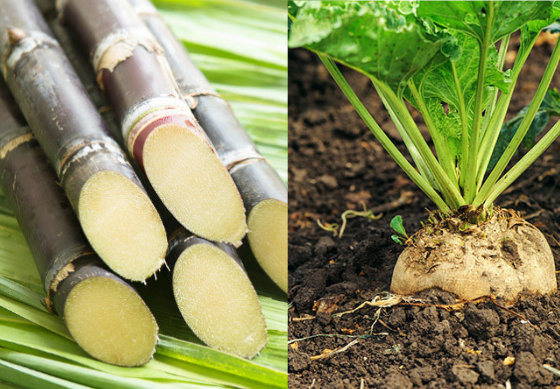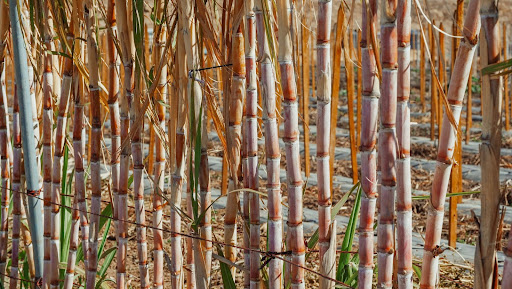Manufacturers consider beet sugar vs cane sugar when choosing sweeteners for different food products.
Manufacturers consider beet sugar vs cane sugar when choosing sweeteners for different food products.
Blog Article
Discover the Uses and Conveniences of Beet Sugar Vs Cane Sugar in Your Daily Diet
Checking out the distinct high qualities of beet and cane sugar discloses greater than just their sweetening abilities; it highlights their one-of-a-kind impacts on wellness and cookeries. Beet sugar, understood for its subtle flavor, is typically favored in delicate treats, whereas cane sugar, with its tip of molasses, adds richness to robust recipes. Each type holds its very own nutritional account and glycemic implications, welcoming a much deeper understanding of their duties in a balanced diet regimen and sustainable intake methods.
Beginning and Manufacturing Processes of Beet and Cane Sugar

The distinctive environments and dirt types needed for growing sugar beetroots and sugarcane add to differences in their growing techniques and geographic distribution, affecting the business economics and sustainability of their manufacturing. beet sugar vs cane sugar.
Nutritional Comparison In Between Beet Sugar and Cane Sugar
Regardless of originating from various plants, beet sugar and cane sugar are nutritionally really comparable, both mostly containing sucrose. Each supplies about 4 calories per gram, converting to about 16 calories per tsp. Structurally, both sugars are made up of about 99.95% sucrose, with minimal quantities of various other compounds like moisture and trace element, which do not significantly alter their nutritional profiles.

Eventually, when selecting between beet sugar and cane sugar based upon nutritional web content alone, both deal the same advantages and disadvantages as they are basically types of the very same particle-- sucrose, providing fast power without other nutrients.
Influence on Health: Glycemic Index and Caloric Material
Checking out better into the impacts of beet sugar and cane sugar on health, it is vital to consider their glycemic index and caloric material. Both sugars are categorized as sucrose, which contains sugar and fructose. This make-up leads them to have a similar influence on blood sugar levels. The glycemic index (GI) of both beet and cane sugar is around 65, categorizing them as high-GI foods, which can trigger fast spikes in blood sugar levels. This is an important aspect for individuals handling diabetes mellitus or those trying to support their power degrees throughout the day.
Each sort of sugar includes about 4 my website calories per gram, making their calorie content matching. For those checking caloric intake, specifically when handling weight or metabolic health conditions, comprehending this equivalence is important (beet sugar vs cane sugar). Extreme intake of any kind of high-calorie, high-GI food can contribute to health concerns such as obesity, heart condition, and insulin resistance.
Environmental and Economic Factors To Consider of Sugar Production
Beyond health effects, the manufacturing of beet and cane sugar likewise elevates substantial environmental and economic problems. Sugar beet growing often tends to need cooler environments and has a lower geographical impact contrasted to sugar cane, which grows in exotic areas. Both crops are extensive in terms of water usage and land occupation, potentially leading to deforestation and water deficiency. Financially, the global sugar market is very volatile, affected by adjustments check these guys out in global trade plans and aids. Numerous countries incentivize sugar production through financial backing, skewing market value and affecting small-scale farmers negatively.
Furthermore, the usage of pesticides and fertilizers in both beet and cane sugar farming can cause soil deterioration and air pollution, more impacting biodiversity and local water bodies (beet sugar vs cane sugar). The choice between growing sugar beet or cane commonly hinges on regional ecological problems and financial factors, making the sustainability of sugar production a complicated problem
Culinary Applications and Taste Distinctions
While the environmental and economic aspects of sugar manufacturing are certainly considerable, the choice between beet and cane sugar also influences cooking applications and flavor profiles. Beet sugar, obtained from the sugar beet plant, is recognized for its remarkably neutral preference.
Walking cane sugar, drawn out from sugarcane, typically maintains molasses traces, which give an unique splendor and deepness. This slight molasses flavor boosts the complexity of baked items, sauces, and marinades. It is particularly favored in products where a caramel touch is wanted, such as in brownies or gingerbread. The minor variant in moisture material in between beet and cane sugar can impact the texture and uniformity of meals, making cane sugar a favored selection for specific dishes that benefit from its unique residential properties.

Conclusion
In conclusion, both beet and cane sugar have distinctive origins and production processes, providing comparable dietary accounts with small differences in salt web content and flavor. While their effect visit this site on health, especially concerning glycemic index and calories, is equivalent, the option between them commonly comes down to environmental, economic aspects, and particular culinary demands. Recognizing these facets can assist consumers in making notified decisions that line up with their health and wellness goals and taste preferences.
Report this page